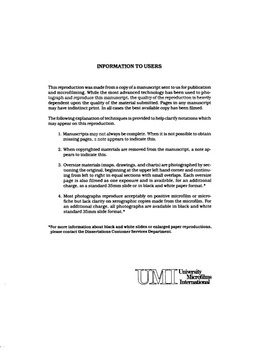| dc.contributor.author | Rahmani, Monireh, | en_US |
| dc.date.accessioned | 2013-08-16T12:29:28Z | |
| dc.date.available | 2013-08-16T12:29:28Z | |
| dc.date.issued | 1985 | en_US |
| dc.identifier.uri | https://hdl.handle.net/11244/5405 | |
| dc.description.abstract | Trade has contributed greatly to the Gilaki lexicon, but ideological factors have played a significant role in altering the use of titles and personal names. | en_US |
| dc.description.abstract | Conclusions drawn from this study suggest that the psychological make-up or self-esteem of any ethnic group is a crucial factor in the preservation of linguistic integrity; a demoralization in the psychological make up of any ethnic group may cause the extinction of its language just as a revitalization of ethnic pride may help to restore the viability of that language. | en_US |
| dc.description.abstract | In spite of all the contacts and exposures to various languages including the social pressure for conformity to Farsi, Gilaki has remained conservative in many areas--phonology, morphology, and syntax. Gilaki has retained its own lexicon, especially the parts related to the natural and cultural environment at Gilan, and its syntax showing that those two aspects of Gilaki are most stable. | en_US |
| dc.description.abstract | The Gilaki language change was examined in two diameteric dimensions: (1) synchronically, social parameters such as sex, age, education, social class, degree of ethnic/national consciousness, place of residence, and marital status; and (2) diachronically, the impacts of different forms of contacts such as trade, domination, ideology (spiritual contact), and the political context at the time of change. | en_US |
| dc.description.abstract | Diachronically Gilaki has undergone phonemic, lexemic, and grammatical changes in response to contacts with speakers of various linguistic communities as well as by the natural processes of internal change. | en_US |
| dc.description.abstract | Synchronic factors such as occupational level (social class), marital status, ethnicity, and the length of time the family resided outside Gilan are influential variables that affected language change. | en_US |
| dc.description.abstract | The primary undertaking of this study has been to investigate language change in Gilan, especially during the period from the beginning of the twentieth century until 1979. | en_US |
| dc.description.abstract | Data for this study were gathered during two periods of fieldwork in Iran, the first in 1979 and the second and final part of this research was done in 1982. | en_US |
| dc.format.extent | ix, 275 leaves : | en_US |
| dc.publisher | The University of Oklahoma. | en_US |
| dc.subject | Ethnology. | en_US |
| dc.subject | Anthropology, Cultural. | en_US |
| dc.subject | Linguistic change. | en_US |
| dc.title | Ethnography of language change : | en_US |
| dc.type | Thesis | en_US |
| dc.thesis.degree | Ph.D. | en_US |
| dc.note | Source: Dissertation Abstracts International, Volume: 46-12, Section: A, page: 3770. | en_US |
| ou.identifier | (UMI)AAI8604589 | en_US |
| ou.group | College of Arts and Sciences::Department of Anthropology | |
